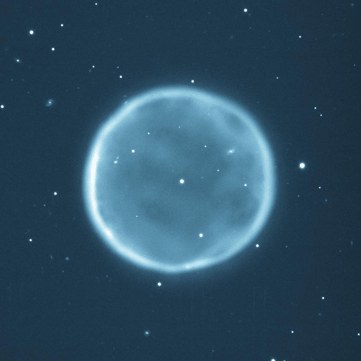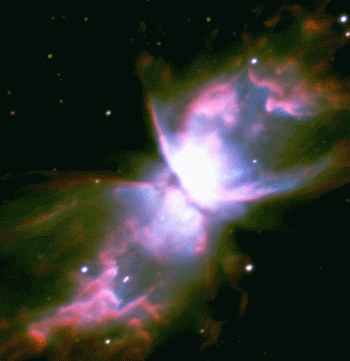Planetary nebulae are the glowing clouds of dust and gas that remain once a Sun-like star has reached the end of its life and ejected its outer layers. Theoretically, such a nebula should assume a roughly spherical shape as these gas shells expand, but four out of five known planetary nebulae are not.
Now, astronomers based in Germany have detected magnetic fields in the central stars of four planetary nebulae, which could explain the apparent paradox. Team leader Stefan Jordan of the University of Heidelberg, Germany, working with Klaus Werner of Tuebingen University and Simon O’Toole of Bamberg University explains that the discovery of these magnetic fields represents the first direct clue to explain the complex shapes of planetary nebula.

Stefan Jordan
Stars like our Sun spend the majority of their life fusing hydrogen into helium. At the end of this phase, however, these stars expand in diameter as their gravitational field fails to counteract the increasing gas pressures within. Ultimately, they balloon up by a factor of one hundred or so and become red giants. At the end of this giant phase, the star’s outer layers are ejected and expand outward from the remnant star, which later evolves into a white dwarf when all nuclear fusion stops.
Planetary nebulae form when stellar winds from the central star collide causing a shock wave to produce dense clouds of dust and gas, which are excited by energy from the hot central star. This illumination can last for some 10000 years but explaining the puzzling shapes of about 80% of planetary nebulae has remained difficult. The majority are bipolar or elliptical rather than spherical and until now astronomers assumed the cause to be either centrifugal effects due to the rapid spin of the red giant or the presence of a companion star. However, the most recent and most convincing theory invokes magnetic fields produced by a stellar dynamo or ancient magnetic material in the star, to explain their peculiar shapes. Magnetic fields might pull the dust and gas of a planetary nebula in much the same way but on a far larger scale as the magnetic field of a bar magnet pulls iron filings.

The spherical Abell 39 Nebula (Copyright: WIYN/NOAO/NSF)
There was, until recently, scant evidence of such stellar magnetic fields in planetary nebulae. Radio observations in 2002, however, revealed magnetic fields in the circumstellar envelopes of giant stars and since such envelopes are the progenitors of planetary nebulae, astronomers began to wonder whether the magnetic fields might exist long enough to affect the formation of the nebulae.

The bipolar Butterfly Nebula NGC 6302 (Copyright: ESO)
Jordan and his team have now focused on the central stars in several planetary nebulae using the FORS1 spectrograph of the Very Large Telescope (VLT) at the European Southern Observatory, in Chile. Their observations of the polarisation of the light emitted by four such central stars revealed characteristic spectral lines indicative of the Zeeman effect. The Zeeman effect manifests itself in the degree of polarisation of light in a magnetic field. The degree of polarisation of light from four stars with planetary nebulae showed them to have magnetic fields with strengths of 1000 to 3000 Gauss, one to three thousand times the strength of the Sun’s magnetic field.
The team is now searching for magnetic fields in the central stars of spherical planetary nebulae. The fields in these systems should be much weaker than those just detected and will help them correlate magnetic field strength with nebula shape.
Further reading
Stefan Jordan’s Homepage
http://www.stefan-jordan.de/
Klaus Werner’s Homepage
http://astro.uni-tuebingen.de/~werner/
Suggested searches
planetary nebulae